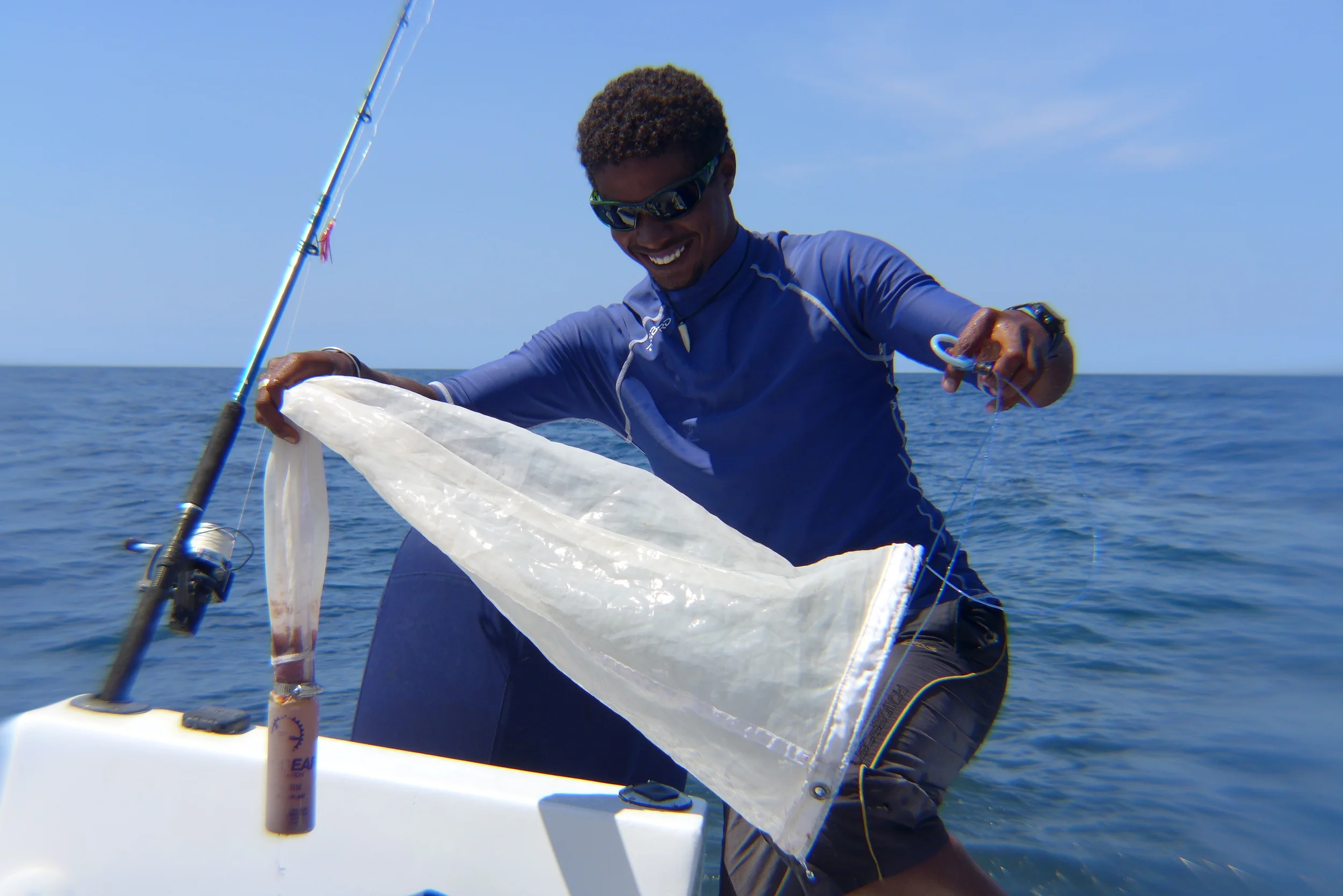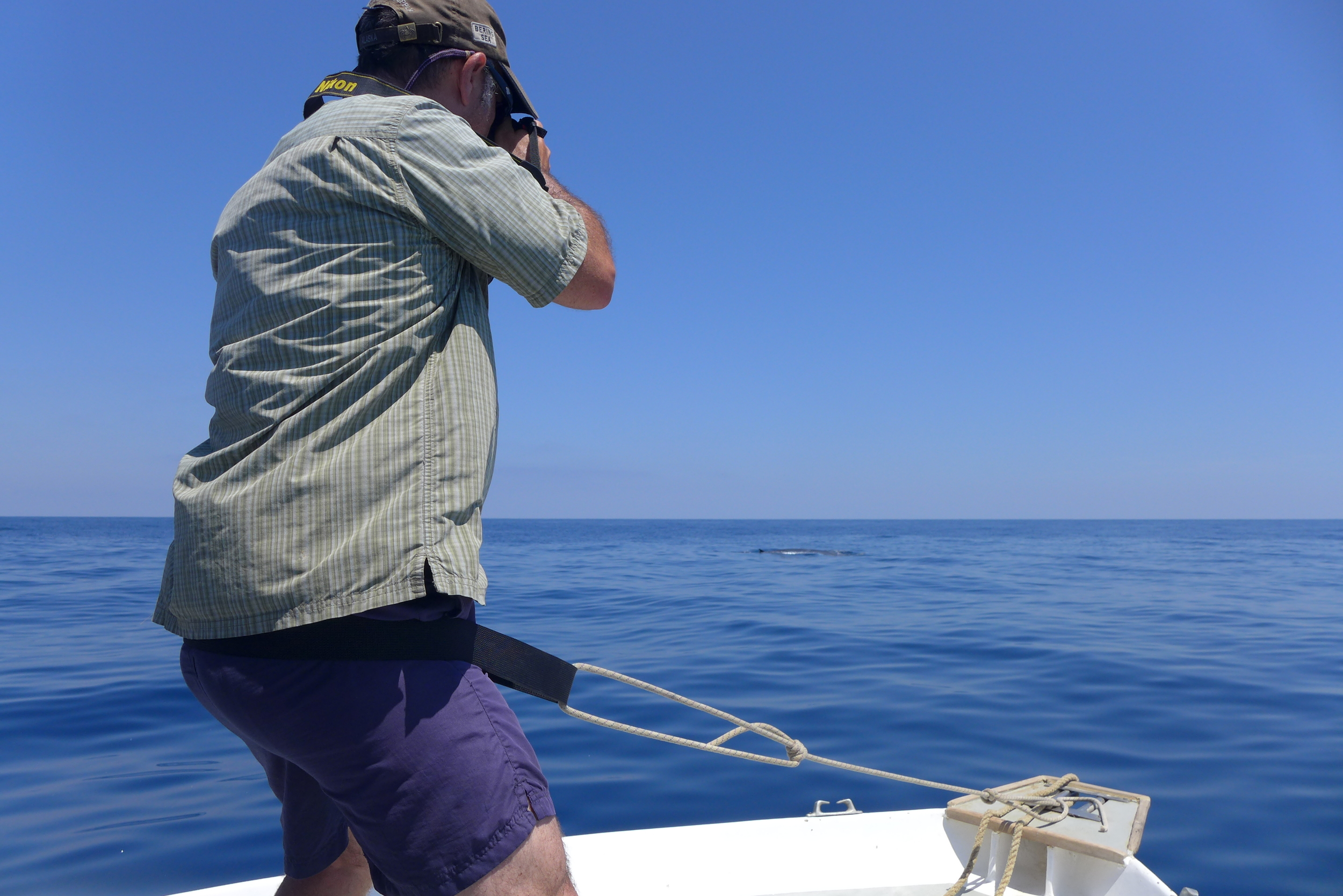The Madagascar Omura’s Whale Project employs a diverse set of methods to study the biology of this species in an integrative manner.
Photographic Identification (Photo-ID) – like most other cetaceans individual Omura’s whales can be identified from natural markings. We use the dorsal fin shape, nicks and scars, the right-side blaze and the chevron on both sides. Re-sightings of individuals across years and within seasons are used to estimated abundance of the population and define movements and ranges of individuals.
Skin Biopsy – now routine in research on both large and small cetaceans, small samples of skin are harmlessly collected with biopsy darts delivered with a crossbow or compressed air rifle. Skin samples allow the analysis of genetic material for phylogenetics, population genetics and molecular ecology (like paternity and relatedness). In addition we will be using for stable isotope analysis to make inferences on what the whales are feeding on.
Bioacoustics – we use boat-based and remoted bottom-mounted hydrophones to collect acoustic recordings of Omura’s whales vocalizations. These recordings are used to learn about the species vocalization and breeding behavior, as well as define their presence throughout the study area with long-term Passive Acoustic Monitoring (PAM)
Plankton Tows and Feces Collection – we use fine nets to collect plankton in the vicinity of feeding whales, and feces from defecation plumes (more affectionately referred to as poop samples). These samples will be used to investigate what the whale are feeding on through direct identification of collected animals and analysis of stable isotopes.







